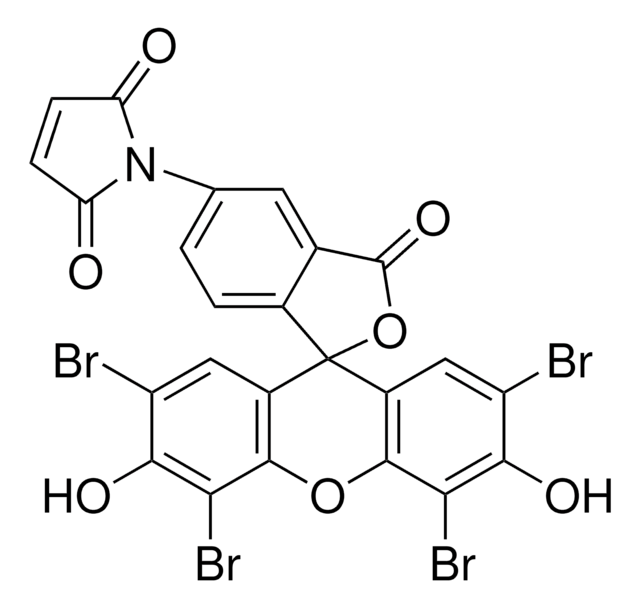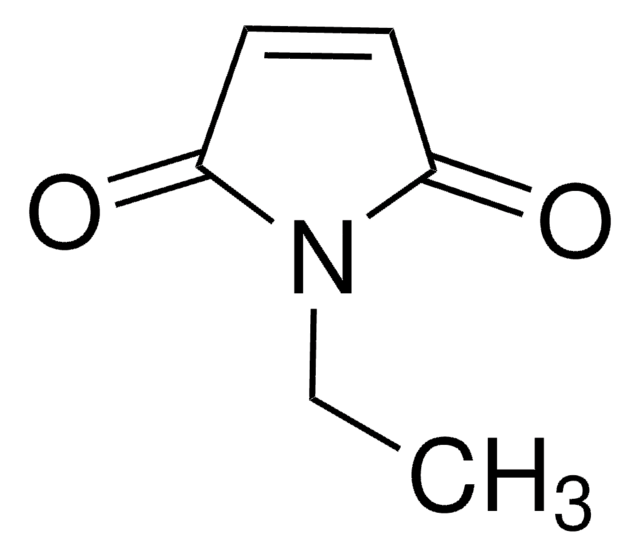71725
Sodium Dodecyl Sulfate
BioUltra, for molecular biology, ≥99.0% (GC)
Synonyme(s) :
Dodécyl sulfate sodium salt, Dodécylsulfate de sodium, Lauryl sulfate sodium salt, SDS, Sodium lauryl sulfate
About This Item
Produits recommandés
Qualité
for molecular biology
Niveau de qualité
Description
anionic
Gamme de produits
BioUltra
Pureté
≥99.0% (GC)
Forme
powder
Poids mol.
micellar avg mol wt 18,000
Nombre d'agrégation
62
Impuretés
DNases, none detected
RNases, none detected
insoluble matter, passes filter test
phosphatases, none detected
proteases, none detected
Perte
≤3% loss on drying, 20 °C (HV)
CMC
7-10 mM (20-25°C)
Pf
204-207 °C (lit.)
Température de transition
cloud point >100 °C
Solubilité
H2O: 0.1 M at 20 °C, clear, colorless
Densité
0.455 g/cm3
Traces d'anions
chloride (Cl-): ≤200 mg/kg
phosphate (PO43-): ≤1 mg/kg
Traces de cations
Al: ≤5 mg/kg
Ba: ≤5 mg/kg
Bi: ≤5 mg/kg
Ca: ≤10 mg/kg
Cd: ≤5 mg/kg
Co: ≤5 mg/kg
Cr: ≤5 mg/kg
Cu: ≤5 mg/kg
Fe: ≤5 mg/kg
K: ≤200 mg/kg
Li: ≤5 mg/kg
Mg: ≤5 mg/kg
Mn: ≤5 mg/kg
Mo: ≤5 mg/kg
Ni: ≤5 mg/kg
Pb: ≤5 mg/kg
Sr: ≤5 mg/kg
Zn: ≤5 mg/kg
Chaîne SMILES
[Na+].CCCCCCCCCCCCOS([O-])(=O)=O
λ
0.1 M in H2O
Absorption UV
λ: 260 nm Amax: 0.04
λ: 280 nm Amax: 0.02
HLB
40
Adéquation
suitable for electrophoresis
InChI
1S/C12H26O4S.Na/c1-2-3-4-5-6-7-8-9-10-11-12-16-17(13,14)15;/h2-12H2,1H3,(H,13,14,15);/q;+1/p-1
Clé InChI
DBMJMQXJHONAFJ-UHFFFAOYSA-M
Vous recherchez des produits similaires ? Visite Guide de comparaison des produits
Description générale
En biochimie des protéines, le SDS a un rôle déterminant dans l'extraction des protéines et l'électrophorèse SDS-PAGE (électrophorèse sur gel de polyacrylamide en présence de dodécylsulfate de sodium). Sa capacité à dénaturer les protéines en perturbant leurs structures secondaires et tertiaires assure leur migration uniforme durant l'électrophorèse sur gel, et permet ainsi de séparer et d'analyser les protéines en fonction de leur masse moléculaire. Cette technique est devenue un outil indispensable pour identifier et caractériser les protéines présentes dans les échantillons biologiques.
Outre son rôle dans l'analyse des protéines, le SDS est également utile dans l'extraction des acides nucléiques et différentes techniques d'hybridation. Ses propriétés détergentes aident à lyser les cellules et à libérer les acides nucléiques, ce qui facilite la purification et l'analyse qui s'ensuivent. Le SDS est aussi employé dans des techniques d'hybridation pour faciliter l'hybridation des brins d'acides nucléiques complémentaires, ce qui permet de détecter et d'analyser certaines séquences d'ADN et d'ARN particulières.
Application
- comme tensioactif non ionique dans une suspension de particules de polystyrène (PS) pour des expériences basées sur des tensioactifs.
- dans une solution saline tamponnée au phosphate comme constituant d'un tampon de lyse pour homogénéiser du tissu de myomètre et de léiomyome.
- comme constituant d'un tampon de lyse pour dissoudre des formazans.
- comme constituant d'un tampon d'extraction nucléaire à forte teneur en sels.
Actions biochimiques/physiologiques
Caractéristiques et avantages
- Produit pouvant être utilisé dans la recherche en biologie moléculaire et en biochimie.
- Qualité BioUltra pour vos applications sensibles.
- Produit exempt de DNases, RNases, NICKases et protéases.
- Produit testé pour garantir l'absence de traces d'anions et de cations.
- Faible niveau de contamination par les métaux lourds, confirmé par des tests et garantissant la compatibilité du produit avec diverses applications.
- Subit une hydrolyse à haute température, particulièrement en milieu acide.
Autres remarques
Produit comparable
Mention d'avertissement
Danger
Mentions de danger
Conseils de prudence
Classification des risques
Acute Tox. 4 Inhalation - Acute Tox. 4 Oral - Aquatic Chronic 3 - Eye Dam. 1 - Flam. Sol. 2 - Skin Irrit. 2 - STOT SE 3
Organes cibles
Respiratory system
Code de la classe de stockage
4.1B - Flammable solid hazardous materials
Classe de danger pour l'eau (WGK)
WGK 2
Point d'éclair (°F)
338.0 °F
Point d'éclair (°C)
170 °C
Équipement de protection individuelle
Eyeshields, Faceshields, Gloves, type P3 (EN 143) respirator cartridges
Certificats d'analyse (COA)
Recherchez un Certificats d'analyse (COA) en saisissant le numéro de lot du produit. Les numéros de lot figurent sur l'étiquette du produit après les mots "Lot" ou "Batch".
Déjà en possession de ce produit ?
Retrouvez la documentation relative aux produits que vous avez récemment achetés dans la Bibliothèque de documents.
Les clients ont également consulté
Notre équipe de scientifiques dispose d'une expérience dans tous les secteurs de la recherche, notamment en sciences de la vie, science des matériaux, synthèse chimique, chromatographie, analyse et dans de nombreux autres domaines..
Contacter notre Service technique




